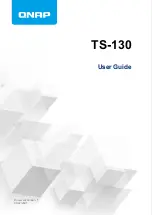
24-port NWay Ethernet Switch User’s Guide
110
Switch Management and Operating Concepts
Multicast Routing Algorithms
Note:
An algorithm is not a program. An algorithm is a
statement of how a problem can be solved. A program is
written to implement an algorithm.
Several algorithms have been proposed for building multicast
trees through which multicast packets can be delivered to the
destination nodes. These algorithms can be potentially used in
implementing the multicast routing protocols.
Flooding
The Flooding algorithm is the simplest technique for delivering
multicast packets to the routers of a subnetwork. When a router
receives a multicast packet it will first check whether it has seen
this particular packet earlier of this is the first time that this
packet has reached this router. If this is the first time, the
router will forward the packet on all interfaces, except the one
from which the packet was received. Otherwise, the router will
simply discard the packet. This way we make sure that all
routers in the subnetwork will receive at least one copy of the
packet.
Although this algorithm is pretty simple, it has some major
disadvantages. The flooding algorithm generates a large number
of duplicated packets and wastes the network bandwidth.
Furthermore, since each router needs to keep track of the
packets it has received in order to find out whether this is the
first time a particular packet has been seen or not, it needs to
maintain a distinct entry in its table for each recently seen
packet. Therefore, the Flooding algorithm makes inefficient use
of router memory resources.
















































